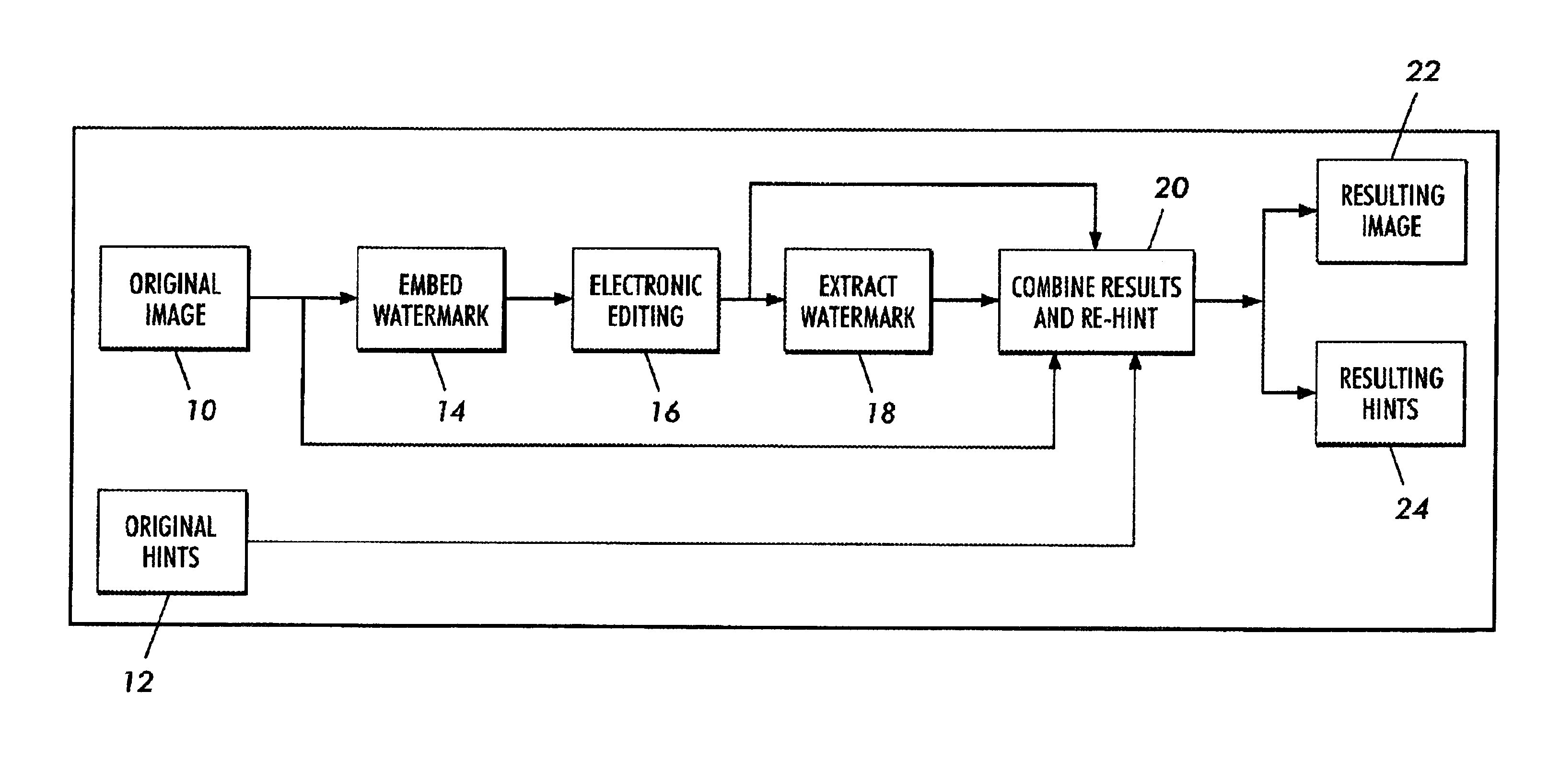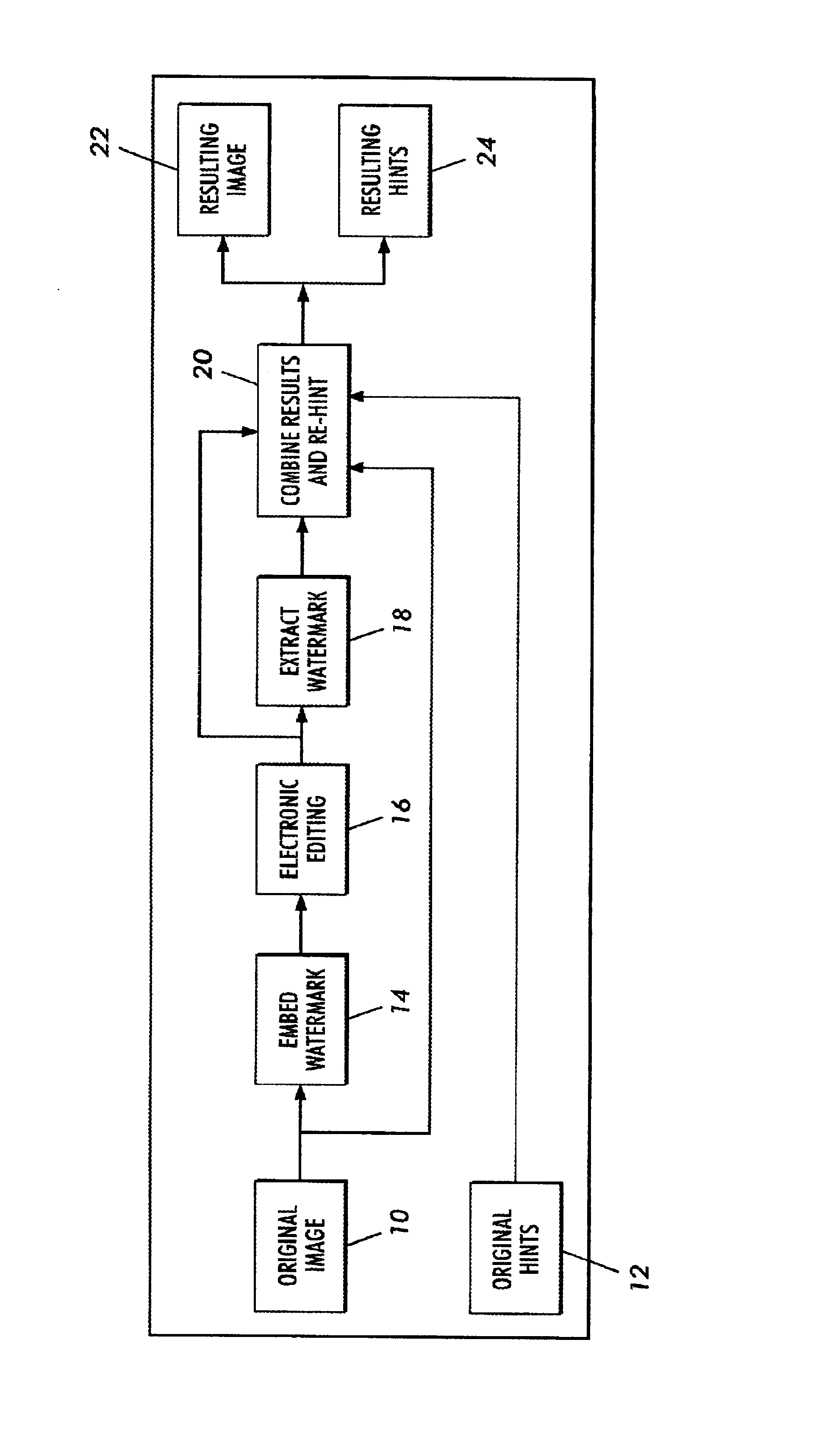Method of detecting changes occurring in image editing using watermarks
a technology of image editing and watermarks, applied in the field of methods, can solve the problems of difficult and computationally expensive to determine which regions were not changed, and achieve the effect of computational efficiency and often difficult and computationally expensive to determin
- Summary
- Abstract
- Description
- Claims
- Application Information
AI Technical Summary
Benefits of technology
Problems solved by technology
Method used
Image
Examples
Embodiment Construction
[0012]A schematic of an architecture for electronic editing of images is shown in FIG. 1. Although the method of the invention may be employed with any embedded data associated with an image, for convenience, it will be described with reference to printing hints. An original image 10 has associated with it a plane of printing hints 12. The original image 10 is first separated from its hint plane 12. Then, watermarks are embedded 14 in the original image before it is edited. Then the image with embedded watermarks is edited 16. Two kinds of editing may exist. The first kind does not alter pixel colors (values) and associated hints. This may include translations, cropping and rotation for certain angles (e.g., 90°, −90°, and 180°). For this kind of editing, the method will not only detect change, but also identify the type of change and its correspondence in the original image. The second kind of editing contains filtering, color manipulation, smoothing, scaling and other image proces...
PUM
| Property | Measurement | Unit |
|---|---|---|
| angles | aaaaa | aaaaa |
| angles | aaaaa | aaaaa |
| angles | aaaaa | aaaaa |
Abstract
Description
Claims
Application Information
 Login to View More
Login to View More - R&D
- Intellectual Property
- Life Sciences
- Materials
- Tech Scout
- Unparalleled Data Quality
- Higher Quality Content
- 60% Fewer Hallucinations
Browse by: Latest US Patents, China's latest patents, Technical Efficacy Thesaurus, Application Domain, Technology Topic, Popular Technical Reports.
© 2025 PatSnap. All rights reserved.Legal|Privacy policy|Modern Slavery Act Transparency Statement|Sitemap|About US| Contact US: help@patsnap.com


